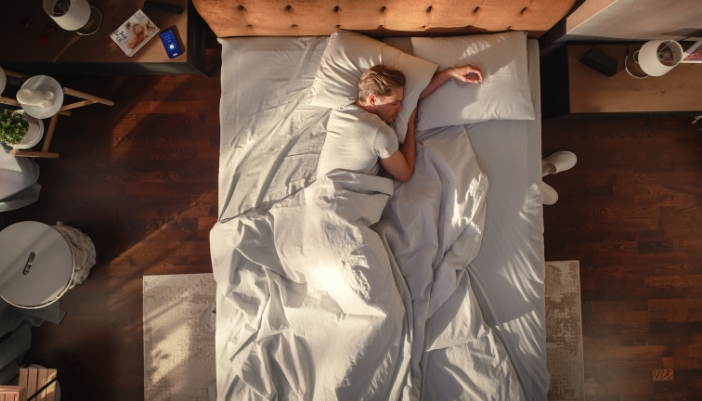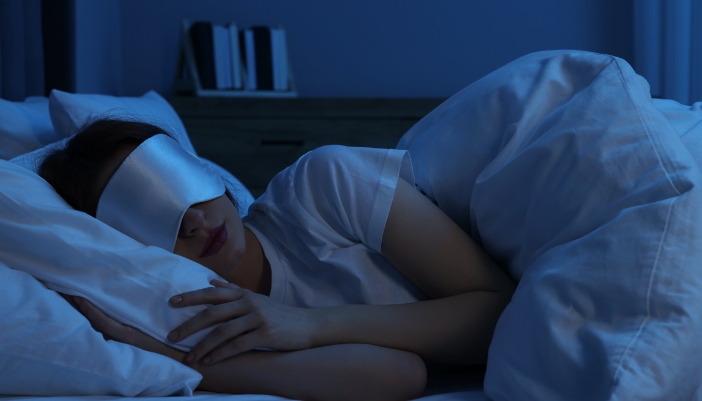This Presidents' Day (next Monday, the 19th), we're rolling out more than just the red carpet – we're diving into the bedrooms of our former U.S. presidents! It's not all about historical decisions and politics; these leaders also had their own quirky sleep habits, too.
From late-night lingerers to daytime dozers, each president had a unique approach to catching those elusive Z's. But here's the catch – not all these habits are snooze-approved for good, restful sleep. So, as we commemorate this day, let's peek into their nocturnal routines and see how the sleep world has evolved for the better!
Presidential Habits
- FDR & the Late Nights
- Reagan, JFK, & Clinton’s Power Naps
- Taft & Cooling Comfort
- Teddy Roosevelt & Snoring Troubles
- Coolidge & Oversleeping
- Polyphasic Jefferson
- Essential Sleep Tips
- Presidential Z’s
FDR: The Art of Balancing Late Nights and Restful Sleep

Franklin D. Roosevelt, known for his leadership during pivotal historical moments, also had a notable sleep schedule. He often worked all night long and slept for most of the morning. But while this pattern worked for him, it's not the ideal approach for everyone.
In our 24/7 world, a consistent sleep schedule is vital to good health. Staying up late and sleeping in might seem like a solution, but it can disrupt our natural sleep rhythms. The trick is finding a balance that allows for both productivity and adequate rest.
Of course, choosing the right mattress helps! Look for memory foam to reduce pressure points or hybrid mattresses that deliver a good balance of comfort and support.
Presidential Power Naps: Reagan, JFK, and Clinton's Secret

Did you know Reagan, JFK, and Clinton shared a sleep secret? Napping! Embracing the art of the power nap, these presidents recharged with quick, strategic snoozes. But they might not have known the best way to nap. Granted, everyone is different, but it’s best to follow these guidelines to get the most out of those short recharges!
- Keep your naps between 20 to 30 minutes.
- Stick to napping between 1 and 3 pm to better align with your body’s circadian rhythm.
- Create a cozy nap zone that is comfortable, quiet, and cool (but don’t nap on your bed — you might fall into deep sleep instead!).
William Howard Taft: A Lesson in Cool Comfort
You wouldn’t think it, but not all presidents found their best rest in the luxurious president’s rooms — William Taft often slept on a screened porch! The main reason was that it was cooler on the porch than in the bed and was the only way for him to rest.
Luckily, we don’t have to resort to such extreme measures in today's world. Now, we have mattresses made with temperature-regulating materials like charcoal, gel beads, and latex to help hot sleepers feel more comfortable. And we can pair them with breathable mattress toppers, moisture-wicking sheets, or cooling blankets, too!
Theodore Roosevelt: Snoring Troubles

Like many unfortunate sleepers, Theodore Roosevelt was known for snoring very loudly. Many attribute this to potential sleep apnea, but unlike today, he didn’t have as many resources as we do to help combat this issue!
- A medium-firm mattress is recommended to keep the spine aligned and reduce pressure on the airways (memory foam is particularly beneficial for this!).
- A memory foam pillow where you can adjust the shape for extra elevation helps keep the airways open. Or look into pillows that encourage side-sleeping (sleeping on your back makes snoring worse).
- An adjustable bed can help mitigate snoring, especially when the head of the bed is elevated between 10 and 30 degrees!
Calvin Coolidge: Finding the Right Amount of Sleep
Calvin Coolidge, known for his unusually long sleep habits, often clocked in 11 hours a night. While this might sound like a dream to some, it highlights the fine line between adequate rest and oversleeping. The recommended sleep per night for adults is actually 7 to 9 hours!
Sleeping more than the recommended hours can have adverse effects like grogginess, mood swings, and not feeling rested or is linked to health issues like depression, heart disease, and diabetes. Which is totally mind-boggling—there shouldn’t be negative effects of sleeping too much! But it turns out your body only needs to go through so many sleep cycles per night, and overdoing it is more than it can handle and disrupt your body’s natural circadian rhythm.
So, if you find yourself oversleeping often, consider adjusting your routine!
Thomas Jefferson: The Polyphasic Sleep Enigma

Thomas Jefferson's sleep habits were as unique as his contributions to American history. He adopted a polyphasic sleep schedule, breaking his rest into multiple short bursts throughout the day and night. But is this habit conducive to feeling better rested?
Sleep experts say it disrupts the body’s natural circadian rhythm and leads to sleep deprivation. But sometimes, short bursts of sleep are more practical if you have a high-demand lifestyle (like a president does!). In any case, the key is to make sure your mattress is versatile with responsive materials like latex or hybrid types.
Essential Tips for Good Sleep Habits
As you can see, there are several sleep habits that you should avoid. But what about the sleep habits you should keep? Thankfully, there are tons of those!
- Avoid heavy meals, caffeine, and alcohol close to bedtime, as they can disrupt sleep. Opt for light snacks, such as a small serving of almonds or a glass of warm milk.
- Ensure your bedroom is dark, quiet, and cool. Consider using blackout curtains, earplugs, or a white noise machine.
- Regular exercise, particularly in the morning or afternoon, can promote better sleep. Avoid intense workouts close to bedtime (no later than three hours before bed!).
- Techniques like deep breathing, yoga, or journaling before bed can help manage stress and calm the mind, preparing the body for sleep.
- Maintain a consistent sleep schedule by going to bed and waking up at the same time every day, even on weekends, to reinforce your body's sleep-wake cycle.
- Limit exposure to screens at least an hour before bed. The blue light emitted by screens can interfere with the ability to fall asleep.
Command Your Sleep

From night owls to nappers, the unusual sleep habits of our former presidents sure are interesting! But remember, while we can learn and adapt our sleep habits with better routines and technology, the first step is making sure your mattress is up to par! A good mattress aligns your spine and matches your sleep style, so you always get the restful sleep you deserve!
At Hudson Appliance, we carry a wide selection of mattresses from all the leading top brands in the size and type that upgrade your sleep to master sleep status! So don’t hesitate to see our collection today or stop by and test them out! You’ll find the one that will help you command your sleep!